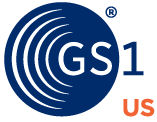Note: When you save this file, do not include the following symbols in the filename, otherwise you will receive an error when you process the file: ; / ? : @ = & " < > # % { } | \ ^ ~ [ ] `( )
How to Import Locations
This article explains steps you can take to import locations. For definitions of each column in the template, view the Import Locations - Definitions article.
Note: Make sure your Top Level GLN is “Published” before you import any “Published” GLNs. The Top Level GLN may be entered as the “Administrative Parent” or “Parent Org” for the GLNs you are importing.
Then click the Import Locations link.
This downloads a spreadsheet template into which you will enter the data. You will then import this file into GS1 US Data Hub. This template does not include any pre-populated data.
To learn which values can be entered in columns, click the Input Values tab at the bottom of the template. To save time, you can copy a value from the Input Values tab and paste it in the appropriate column. Here are some other tips to consider:
Entering a GS1 Company Prefix that starts with a zero (0)?
Change the cell format to the "Text" Category so the zero displays.
Enter the Phone Number and/or the Email Column
One of these two "contact" columns has to be entered for each GLN Type. This information will display for Location View/Use subscribers.
Leave the GLN column blank to have GS1 US Data Hub assign the GLN:
If you have not assigned a GLN to this location or party, leave the GLN column blank (as shown on the screen below). GS1 US Data Hub will automatically add the next available GLN, based on the GS1 Company Prefix you enter.

Already have a GLN assigned to this location or party?
Perhaps the GLN was created in another system. You can enter that GLN in the GLN column. GS1 US Data Hub will verify that this GLN is not already saved in GS1 US Data Hub, and is constructed properly based on the GS1 Company Prefix you have entered.
You Can Validate the GLNs Before You Import:
The Validate Only column enables you to check the data of a GLN BEFORE you import the GLNs into GS1 US Data Hub.
If you select “Y” in this column, all standard data validations are run against the GLN, and error messages are displayed in the “Results” file. If there are no errors, you can return to the original file, leave the Validate Only column blank, or select "N", and submit the data. The GLN data will be imported into GS1 US Data Hub.
View the Import Locations - Definitions article for definitions of each column.
After entering the data in the template, drag & drop the file into the “Upload” area of the Import screen, or click the Browse Files link and select the file from your computer. The filename will display in the File to Import window.
Import Locations as Approved box: Do you have the "Location Approval Process" enabled? Check this box on the Import screen to have locations imported as already “Approved." Otherwise, users with the “Approve” user permission would have to approve each of these imported locations individually.
GS1 US Data Hub processes the data. An “Uploading” icon displays. Results are displayed at the bottom half of the screen.
Click the Refresh Table button every minute or so to view the latest status. When the data is processed, “Complete” displays in the Status column. You can now view the records on the Managed Locations screen.
A number displays in the #Error column. Click the file name to view the errors. To correct these errors and upload these records, open the Location Import Template on your computer and delete any records that were processed successfully.
Make the corrections in the remaining records, then save this file. Then upload this updated file again using the steps outlined above.
If you encounter a 'bad address' error, it indicates that your address is not verified by USPS. This issue may arise from new construction or recent changes, such as a street name update. To resolve this, you can create your location using the GS1 US Data Hub tool.
First, filter the GLNs you want to update, then select Export results for import from the Export drop-down.
Save this template to your computer. Select "Update" in the Action column for all records, and update the desired columns. Save this file, then import the template using the steps above.
View the Update Multiple Locations at Once article for more details.


